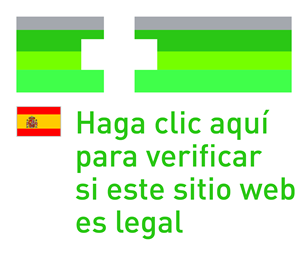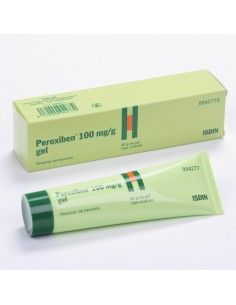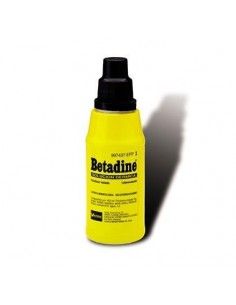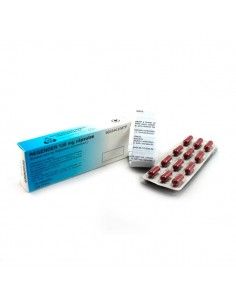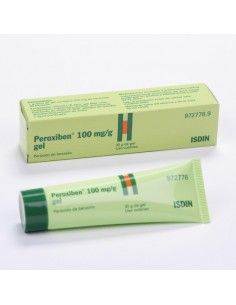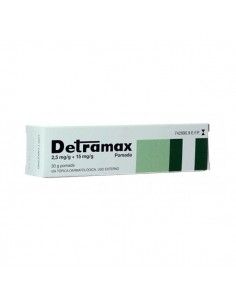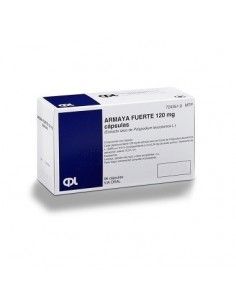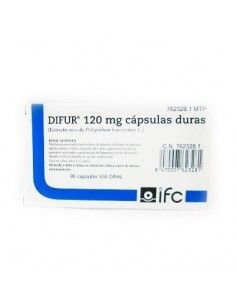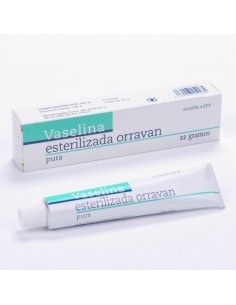Polaracrem topical 20 grams
Action and mechanism
- ANTIALLERGIC], [HISTAMINERGIC (H-1) ANTAGONIST]. Dexchlorpheniramine is the dextrorotatory form of chlorpheniramine, an alkylamine derivative, which competitively, reversibly and non-specifically blocks H1 receptors, decreasing the systemic effects of histamine. It exhibits potent antihistamine effects. Results in vasoconstriction and decreased vascular permeability, reducing allergy-associated redness and oedema. It partially mitigates symptoms associated with allergic processes such as eye redness or nasal congestion. It also reduces dermal itching.
Indications
Temporary relief of discomfort due to:
- [CUTANEOUS IRRITATION] minor.
- ITCHING].
- SUNBURN].
- INSECT BITES].
Posology
Dosage:
- Topical route:2-4 applications daily.
Guidelines for correct administration
- Apply a sufficient amount of cream, completely covering the affected area, two to four times a day.
Contraindications
- Hypersensitivity to any component of the product. There may be cross-reactions with other antihistamines, so it is not recommended to use any H1 antihistamine in patients who have shown hypersensitivity to any compound of the group.
Precautions
- PORPHYRIA. H1-antihistamines have been associated with the occurrence of porphyric flare-ups and are not considered safe in these patients.
- Dexchlorpheniramine may give rise to photosensitivity phenomena, so it is not recommended to sunbathe during treatment, and to protect yourself with sunscreens.
Warnings on excipients:
- Because it contains methyl parahydroxybenzoate it may cause allergic reactions (possibly delayed).
Patient advice
PATIENT ADVICE:
- Avoid contact with eyes.
- Do not apply to peeling, blistered or wet skin, or around the eyes, genitalia or other mucous membranes.
- Avoid exposure of skin areas treated with the cream to bright sunlight.
- Do not use occlusive dressings.
- If there is a burning sensation, urticaria, or if the original symptoms persist after use of this medicine, discontinue use and seek medical advice.
Interactions
- May increase the photosensitising effects of other active ingredients leading to photosensitivity reactions.
Pregnancy
- The safety of the use of topical antihistamines in pregnant or breast-feeding women has not been established. The use of this medicinal product is only acceptable in the absence of safer therapeutic alternatives.
Breast-feeding
- It is not known whether topical dexchlorpheniramine is absorbed in sufficient quantity to be excreted in breast milk, nor are there known potential adverse effects on the nursing infant.
Adverse reactions
- Allergic/dermatological. HYPERSENSITIVITY REACTIONS] may occur after topical administration of antihistamines. PHOTOSENSITIVITY REACTIONS] may also occur after intense exposure to sunlight, with [DERMATITIS], [PRURITURE], [EXEMPTEMATIC ERUPTIONS] and [ERITEMA].
The possibility of systemic adverse effects common to antihistamines should also be considered, especially if applied to large areas of skin.
Overdose
- Symptoms: Accidental ingestion of a considerable amount may lead to the appearance of some of the symptoms of overdose of H1-antihistamines, which are: CNS depression with drowsiness (mainly in adults), CNS stimulation and antimuscarinic effects (especially in children), including excitability, ataxia, hallucinations, tonic-clonic spasms, mydriasis, dry mouth, flushing of the face, urinary retention and fever. Hypotension and cardio-respiratory collapse may also occur.
- Treatment: there is no specific antidote for antihistamine overdose; the usual emergency resuscitation should be carried out, including activated charcoal, saline laxatives and cardio-respiratory support measures where necessary. Stimulants should not be administered. Vasopressors may be used to treat hypotension.



